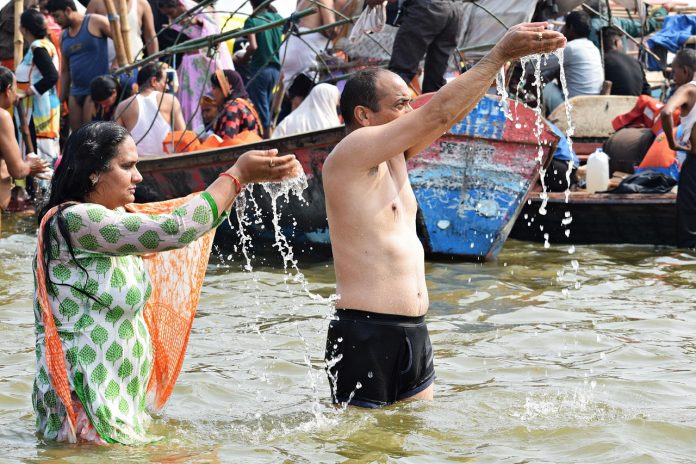Several Guyanese and other Indo-Caribbean individuals have made the journey to Prayagraj, with many more planning to visit, to partake in worship and darshan (blessings) during the sacred Maha Kumbh Mela period. This event represents the pinnacle of pilgrimage for Hindus.
During this extraordinary occasion, Guyanese and others immersed themselves in the holy confluence of three rivers at Prayagraj. This once-in-a-lifetime experience holds special significance, as the next Maha Kumbh in this city will not occur for several decades. Participants offered prayers to the sun and the Ganga River, surrounded by the chanting of mantras, and made offerings to the divine. They engaged in rituals, including ‘aarti’, and some even enjoyed boat rides at the sacred meeting point of the three rivers.
The Maha Kumbh commenced on January 13 (Makar Sankranti), a time when the earth begins its journey towards longer, warmer days, and will conclude on Shivratri (February 26), another of the holiest festivals for Hindus. Many Guyanese from the diaspora are set to celebrate Shivratri in India.
This Kumbh represents the largest religious gathering globally, drawing hundreds of millions of attendees. On certain days, over twelve million people participated, with the holiest day alone witnessing a turnout of 35 million worshippers. Dignitaries from across India, including the President, Prime Minister, Ministers, Governors, and renowned personalities from various fields like actors (Amitabh Bachchan and Hema Malini) and cricketers, took part in the sacred rituals.
This Maha Kumbh is particularly noteworthy as it occurs after a six-year hiatus, following a mini Kumbh in January 2019, an event which I had the privilege to attend. The Maha Kumbh rotates across four significant rivers and cities—Prayagraj, Haridwar, Ujjain, and Nashik—every twelve years, while mini Kumbhs occur every three years at different holy rivers. Ganga Puja is traditionally held at the riverbank, accompanied by cultural programs and communal feasts.
The current Maha Kumbh has attracted an astonishing 420 million people who have sought to cleanse themselves in the river, as it is believed that bathing in the Holy Triveni Sangham (the confluence of the Ganga, Yamuna, and Saraswati) purifies one from sins.
To accommodate the influx of worshippers and visitors, a vast tent city has been established. The Indian Government extended complimentary transportation (both air and ground) and hospitality to foreign ambassadors and high commissioners in Delhi for a tour of the Maha Kumbh, with around 78 missions participating. Some ambassadors even took a dip in the sacred river. The Government of India has invited one or two ministers from diaspora governments, along with selected media representatives, to visit and partake in the Kumbh Mela and a conference along the river from February 20 to 23. I will be attending the Kumbh starting February 20, following my earlier visit in December and January for the 2025 Pravasi Bharatiya Divas, celebrating the 40 million Indian diaspora.
Participants from Guyana, Trinidad, and Suriname who attended the Maha Kumbh shared their experiences of profound spiritual devotion, describing it as a heavenly encounter that fostered a divine connection with God. They expressed their prayers for peace, happiness, prosperity, wisdom, and good health for themselves, their families, and their nations.


